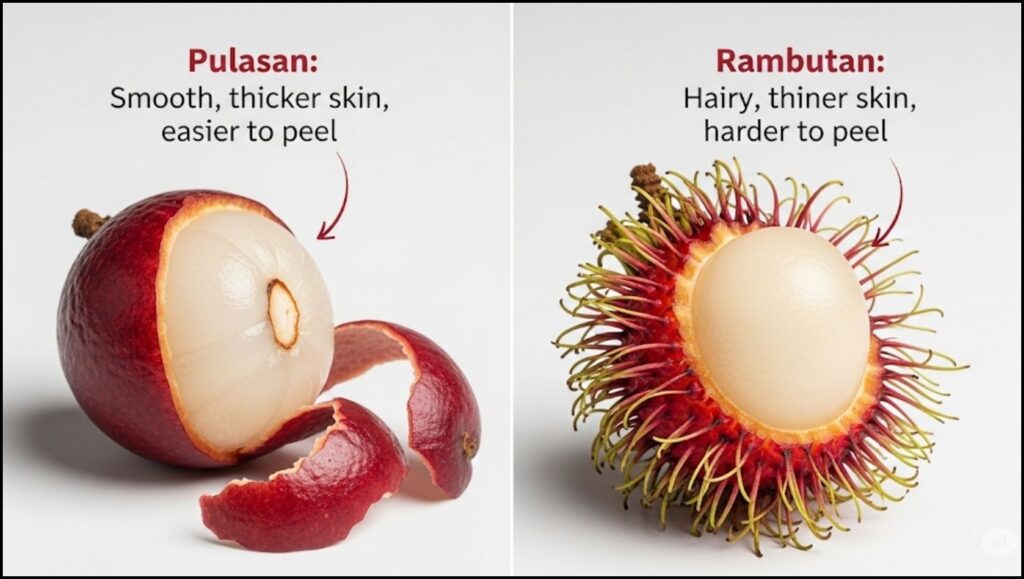
The pulasan fruit, a lesser known but increasingly sought-after tropical delicacy, finds its largest global producer in Malaysia. While often overshadowed by its more famous cousin, the rambutan, the pulasan is gaining international recognition for its distinct sweetness, easy-to-peel skin, and rich nutritional profile. This rise in prominence is driving focused cultivation efforts within its native Southeast Asian home, with Malaysia at the forefront of this emerging market.
Malaysia’s Dominance in Pulasan Production
Malaysia, with its ideal tropical climate and long-standing agricultural expertise in exotic fruits, has consistently maintained its position as the primary cultivator of the pulasan fruit. The country’s favorable conditions, characterized by high humidity and consistent rainfall, provide an optimal environment for the Nephelium ramboutan-ake tree, as noted by agricultural experts. While precise, universally verifiable production statistics for pulasan alone are challenging to isolate from broader tropical fruit data, consistent reporting from regional agricultural bodies and industry observers points to Malaysia as the leading grower.
“Malaysia has a natural advantage due to its indigenous pulasan varieties and generations of cultivation knowledge,” stated Dr. Aisha Rahman, a horticultural scientist at the Universiti Putra Malaysia, in a recent interview. “We are seeing a renewed interest in promoting pulasan not just for local consumption, but also for its export potential to niche markets globally.”
The Pulasan: A Distinct Tropical Gem
The pulasan fruit, whose name derives from the Malay word ‘pulas’ meaning ‘to twist’ (referring to how the fruit is opened), is a close relative of the rambutan and lychee, belonging to the Sapindaceae family. Unlike the rambutan, its skin is thicker and covered in shorter, blunter tubercles rather than long, soft hairs. This makes it significantly easier to peel. Inside, the translucent, juicy flesh is typically sweeter and less acidic than rambutan, often separating cleanly from the seed, a highly desirable trait for consumers.
Botanically, pulasan trees thrive at elevations between 360 and 1,150 feet, requiring well-drained soil rich in organic matter. Optimal temperatures for growth range from 22°C to 35°C, making much of Peninsular Malaysia and parts of Borneo ideal for its cultivation.

Cultivation Practices and Economic Importance
Pulasan cultivation in Malaysia typically involves both traditional smallholder farming and, increasingly, more organized orchards. Propagation is primarily done through budding, ensuring the quality and consistency of the fruit. While male pulasan trees are necessary for pollination, modern techniques aim to maximize the yield of “bisexual” flowers to reduce the number of non-fruiting plants. Farmers often employ irrigation during dry spells to ensure consistent fruit development, as the tree is sensitive to prolonged drought.
The economic importance of pulasan in Malaysia extends beyond direct consumption. The fruit is consumed fresh, used in desserts, and can be processed into jams, jellies, and even beverages. Its rich nutritional profile, including vitamins, minerals, and antioxidants, further enhances its market appeal, positioning it as a “superfood” in some wellness circles. The short shelf life of fresh pulasan, however, presents a significant challenge for widespread international export, necessitating advancements in cold chain logistics and packaging.
Regional Competitors and Emerging Markets
While Malaysia leads, other Southeast Asian countries, including Indonesia, Thailand, and the Philippines, also engage in pulasan cultivation, though generally on a smaller scale or primarily for domestic markets.
- Indonesia: Particularly in Sumatra and Java, Indonesia cultivates pulasan in traditional orchards. Much of its production is for local consumption, with regional trade primarily directed towards neighboring Malaysia and Singapore.
- Thailand: While not native to Thailand, small-scale pulasan farming exists in southern provinces bordering Malaysia. Thai pulasan is often targeted at high-end specialty markets due to its quality, though volumes remain limited compared to other major Thai fruit exports like durian and mangosteen.
- Philippines: In Mindanao, where climatic conditions are suitable, pulasan is grown, largely for local consumption within communities with cultural ties to Malaysian influences.
The Future of Pulasan on the Global Stage
The global market for exotic fruits is experiencing steady growth, driven by increasing consumer awareness of diverse flavors and nutritional benefits. For pulasan, this trend presents a significant opportunity. Efforts are underway in Malaysia and other producing nations to improve post-harvest handling, explore value-added products, and develop robust export infrastructure.
“Overcoming the challenges of perishability is key to unlocking pulasan’s full export potential,” commented Mr. Lim Teck Meng, a representative from the Malaysian Ministry of Agriculture and Food Security. “We are investing in research and development to extend shelf life and explore new processing methods that can bring pulasan to a wider global audience.”
As international demand for unique tropical fruits continues to expand, Malaysia’s established position as the leading pulasan fruit producer places it in a strong position to capitalize on this growing market. The sweet, easily enjoyable fruit is slowly but surely making its mark beyond its Southeast Asian origins, promising a flavorful future for this tropical gem.
5 Drought-Tolerant Fruit Trees That’ll Flourish Even in the Harshest Heatwaves
